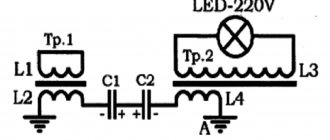It can be much easier to plug it into the socket behind the bedside table once, bring the wire out and connect the phone to the socket from time to time.
Most people are afraid of the consequences of what will happen if they keep the charger under voltage 24 hours a day. What kind of myths are these and where they come from, let’s take a closer look.
Why do people even turn off the charger? As a rule, this is explained by three main reasons:
- safety
Voltage imbalances will, firstly, damage the charging, and secondly, they can cause a fire.
- saving
Since the device is plugged into an outlet, it means that it still consumes electricity, albeit a little.
- resource
Any electrical device has a limited service life. And if it is constantly under voltage, then in a couple of years you will have to buy a new power source.
Electricity costs
A good charger from a powerful smartphone can deliver 10-15 kW while the phone is charging. In addition, it belongs to pulsed devices - it will consume electricity until the owner disconnects the power supply from the network. However, there is no need to worry about energy costs.
@Kai Hendry
As long as a smartphone is not connected to the charger, its actual electricity consumption is critically low. It accounts for literally a hundredth of a kilowatt. Considering the total energy consumption in the house - TV, computer, household appliances - this is nothing.
So I hasten to reassure all thrifty users - you won’t have to pay more for light because of a bad habit. Scientists have also asked this question. As a result of a small experiment, they found out that seven chargers continuously in the outlet will generate only about 2 kW in a year. Moreover, fewer chargers were simply not taken into account by the meter.
Electricity consumption
Of course, if the device is energized in the outlet, it will consume electricity.
But this will be such a minuscule amount that if you turn off the power to all other devices at once and leave only charging, your disk counter will not even move.
For most of these metering devices, sensitivity starts at a power of 5.5 W. Your charger when idle consumes from 0.25 to 0.35 W per hour.
Even if you take the maximum and do some small calculations, it turns out that at a tariff of 4 rubles per kilowatt, you will run up as much as 12 rubles in a year! This is one ruble per month.
If you are a very frugal person and this is critical for you, feel free to turn off the charger. With the money saved over three years, you can treat yourself to some doshirak.
Wear and tear of the device
Another popular myth is that people who leave their charger in a socket simply break it. And indeed: each device has a declared period of active operation. When the power supply is connected to the electrical network, its mechanism gradually wears out. But is this so critical?
Manufacturers assure that the charging service life is from 50 to 100 thousand hours. In fact, this number can be reduced, since most devices have rather weak capacitors. On average, it lasts three to four years.
During this time, most users manage to buy a new smartphone and charger for it. Today technology does not stand still. Phones become obsolete very quickly, and every few years another coveted new product with breakthrough innovations appears on the market.
What if it gets hot?
Sometimes a charger plugged into a socket gets hot. If the heating is insignificant and occurs when using the device for its intended purpose, then it’s okay. Extreme heat when not in use is a warning sign of a possible charging problem. But the problem may not be in the device, but in the outlet, especially if the wiring is old - it simply cannot cope with the modern load, since it was not designed for it. With such sockets, there is a high risk of damage to both the charger and the gadget, so it is better to use fuses or adapters.
Fire or explosion
Many users are afraid that the charger may catch fire or even explode. Let me start with the fact that an explosion definitely cannot happen: the consumption is too low, and therefore the accumulation of electricity. In addition, if the device is working properly, a fire will not happen either. Most modern chargers are designed specifically for the habit of people leaving them in the socket.
@Tony Webster
But there is still a small probability. Fire occurs among owners of old electrical wiring or a faulty power supply. Tragedy can also occur in the event of a sharp surge in electricity. You should never forget about accidents, even if their probability is critically low.
So is it possible to leave the charger in the outlet?
This depends on the wiring in the house and the "charging" state. If the wiring is bad and the charging module is in poor condition (it gets very hot and, for example, the wire is exposed or damaged), then a short circuit may occur. This can be understood by the fact that the charger heats up even when not in use. Also, if the electricity in the house is turned off and turned on again, then a jump in energy is possible from 220 Volts to 380. This will render the charger unusable or may cause a fire hazard.
Otherwise, there is nothing wrong with this; you can safely leave the charger in the outlet. The manufacturers were counting on this.
But if there are small children and pets in the house, be sure to remove the charging module from the sockets. Seeing a protruding wire, they will definitely want to touch it, chew it, and this is deadly. It may not kill a living creature, but it will definitely disable the equipment. Another reason to take out the charger is if your upstairs neighbors often flood you.
- Author: Elena
Rate this article:
- 5
- 4
- 3
- 2
- 1
(6 votes, average: 3 out of 5)
Share with your friends!
So to be or not to be?
Despite all the myths I have listed, I would not recommend leaving the charger in the outlet. There are several reasons:
- Animals and small children can reach the cord. The current in the charger is small, but the shock will be noticeable. In addition, pets can chew through wires, leaving the user without the ability to charge the phone. This can happen at the most unexpected and crucial moment.
- Possibility of fire. As I said, it is always present. Problems may arise with poor-quality charging, whose case gets very hot during use.
If you can’t get rid of this bad habit, I recommend at least “turning off” it when you need to leave the house.
Subscribe to our Social networks
Dangerous or not
The issue here is more serious and concerns our security. Let's look at the main problems that a charger left in the outlet can create.
Fire
Most of us would argue that the likelihood of a quality charger catching fire is low. True, small, but not absent. There is a percentage of risk, and no matter how small it is, it will not become easier for you if you fall into it. For what reason can a high-quality charger catch fire (we won’t talk about low-quality chargers at all - it’s a time bomb)? Let's consider several options:
- Fault in the power supply line . In the event of a certain malfunction (for example, the “zero” burns out at a substation), the voltage in the socket can jump to 380 V. For a high-voltage smoothing capacitor, this is certain death - it will immediately explode like a grenade. For the rectifier and power transistor - almost certainly death and fire.
- Lightning discharge . The magnitude of the voltage induced in the power line in this case can reach a thousand volts or more. Here, as they say, no comments.
- Marriage . No matter how famous and responsible the manufacturer is, he is not immune from defects. Moreover, as a rule, it is not he who makes the components. For example, Apple cannot be called a defector, but this is what is left of the iPhone charger.
Of course, they will object to me that a lot of household appliances are constantly plugged in and operating in standby mode. Moreover, there are sockets with a built-in USB port. In them, the 5 V converter operates around the clock, including without load.
True, but one should not, as they say, confuse God's gift with scrambled eggs. All these devices were designed specifically for this operating mode. For example, they have a varistor at the input - an electronic surge protection device. The vast majority of chargers do not have a varistor. Even if there is, the charger was still designed without taking into account round-the-clock operation without load. You can verify this by simply reading the instructions for your gadget.
Children
The voltage at the charger's output is low and cannot harm a child if it somehow gets into the cable connector or USB port. But, firstly, it is easy for him to put a metal object into the connector and short-circuit the output. The result of such actions can be anything. The memory protection will work, the device will quietly “die”, and possibly catch fire - everything will depend on its circuitry and components. Secondly, it is easy for a child to bite through the power cable and get exposed to 5 V voltage. As mentioned above, this will not cause physical harm. But being very frightened because someone “bitten” your tongue won’t help your mental health.
In addition, small children love to put all kinds of objects into sockets. That is why in stores you can find special plugs that cover the sockets of the socket, and you can’t just pull them out of the socket.
The charger is another matter. He pulled it - and here you have holes under life-threatening voltage.
Animals
Of course, your pet won’t use a fork or a nail to get into the socket, but he can chew the cable and short-circuit the charger’s output. Moreover, he will do it at the first opportunity and with pleasure. Most likely, your cat will not set your house on fire, but the result will be failure of the charger, which is also unpleasant.
Charger
And one last point. Is it harmful to leave your phone charger in the socket for charging? I have heard the opinion that an always-on charger exhausts its life faster. Cells, particularly electrolytic capacitors, degrade quickly. I’ll tell you, as an “artist to an artist”: “electrolytes” degrade during storage. It is not for nothing that experienced radio technicians, before installing electrolytic capacitors in a circuit, “drive” them by connecting them to a direct current source of the appropriate voltage.
As for the “loss of emission” by transistors and microcircuits, there is nothing to comment on here at all. Electrons don’t go anywhere, and semiconductor junctions don’t become thinner if the device is of high quality and all components work properly and don’t heat up like stoves. And if you have a low-quality fake, then constantly turning it off won’t help.
Charge wear
The wear of the charger is a weakly noticeable, but still existing argument in favor of removing the plug from the socket. From the perspective of the average user, the difference in the quality of worn-out and new chargers is almost unnoticeable, but it is still there - the old device will charge your smartphone about 15-20% longer. Although we usually throw away the device before it wears out.
Leaving an unused charger in a power outlet will increase its wear rate slightly. This is a minor minus for anyone who is used to using a charger for a couple of years at most, and then buying a new one. But if you persistently use one charger for five years or more, then you can save it by periodically unplugging it from the outlet.
What are the dangers of a wireless device?
Modern technologies are progressing and simplifying human life. There are wireless chargers that can charge digital equipment from a distance in a short time. They are more durable and easier to use due to the lack of plugs. Such high-quality devices are harmless to phones. It is important to find it correctly for the appropriate model.
It is not recommended to buy Chinese wireless power supplies, which instantly replenish the battery. Because of them, the phone may slow down and function worse. In addition, even when using a high-quality device, it is not recommended that it be constantly charged; it is recommended to disconnect it from power from time to time. Otherwise, there is a risk that the battery will quickly discharge.
Do I need to unplug the charger to save electricity?
You will have to decide this issue yourself. The connected power supply does consume energy, although not much. So, charging a smartphone itself consumes about 5 W per day. In total, it will run up to 2-3 kW per year. It is unlikely that electricity bills will increase significantly from several chargers connected in different places in the apartment. But they will become consumers of electricity.
♥ ON TOPIC: Fast charging for iPhone: which models are supported and which charger you need to buy.
Video: Is it possible to leave a phone charger in an empty outlet?
Conclusion: is it possible to leave a charger in the socket? You now have an idea. I would like to add that sometimes troubles arise because of the cable. To make sure of this, it is advisable to download a special program that will allow you to measure the voltage supplied to the smartphone and the current coming from the adapter. When their parameters differ from the normalized ones, then you need to use a power supply with a different cable, and most likely everything will be normalized. The adapter cable is damaged more often than the charging itself. Good luck!
Sincerely, Andrey Zimin 03/11/2021











